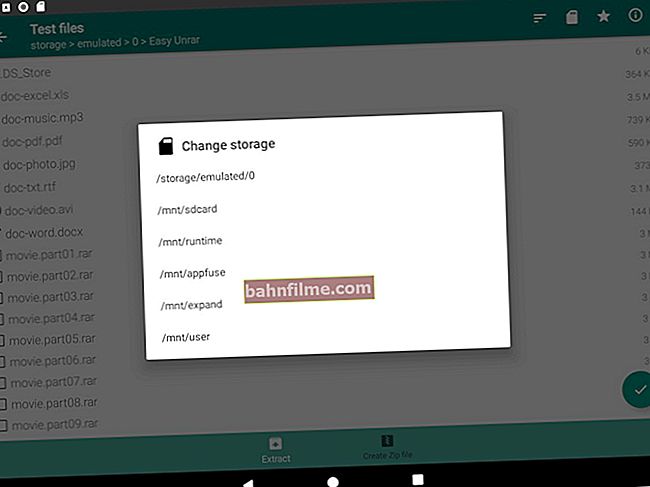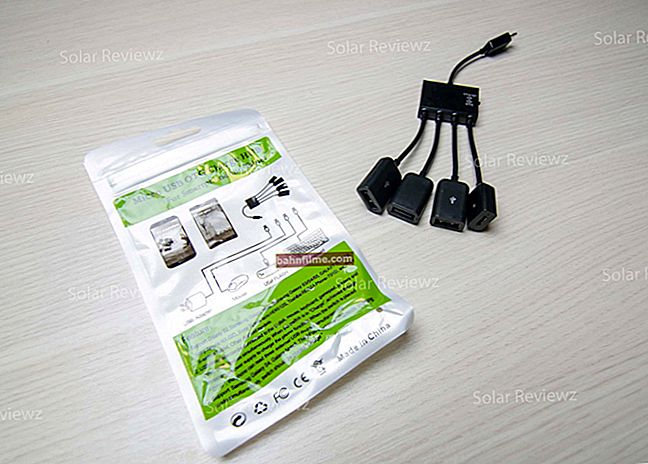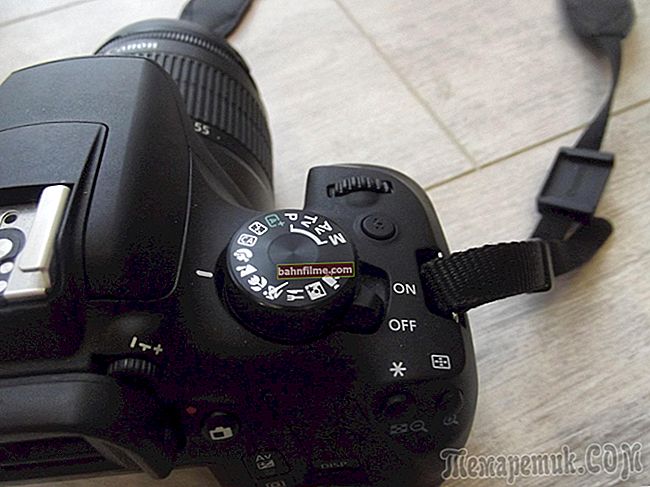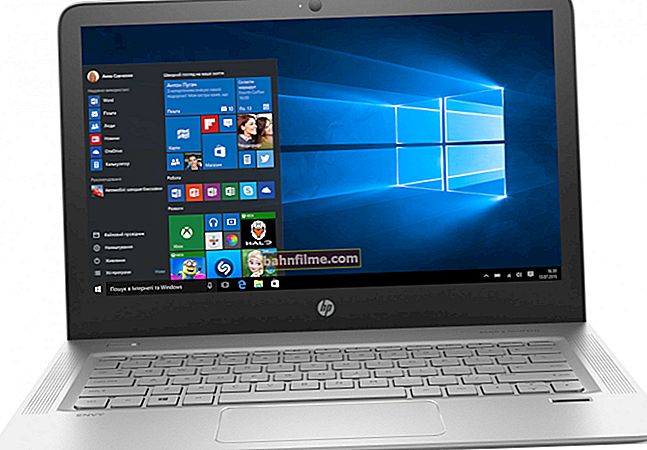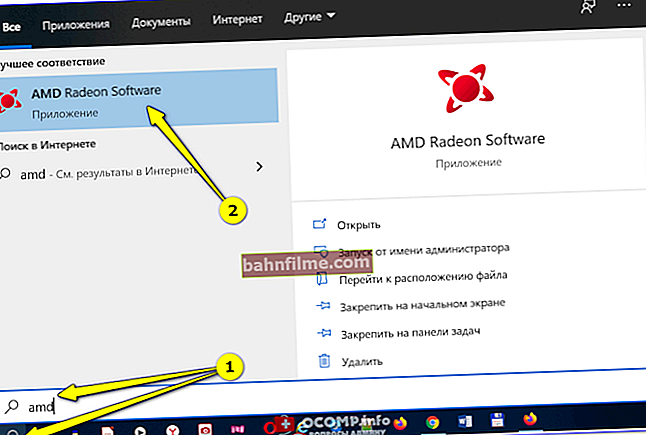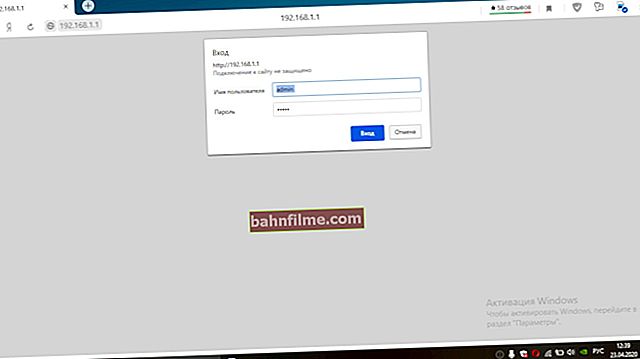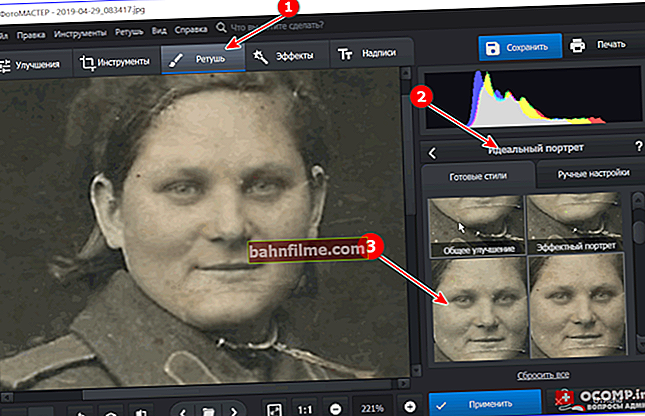 Good day!
Good day!
Sooner or later, many of us are faced with a fairly typical task: we need to convert a video file to another format, simultaneously cutting out extra pieces from it, and trimming uneven black edges (for example). On the one hand, the task is quite extensive and complex (for those who have never done this), on the other hand, it can be completely solved independently.
Actually, in this article I will give a small instruction on working with the VirtualDUB * program to solve this problem. The material is designed for a novice user (who has not previously encountered video processing). Along with this, I will analyze the most frequent incidental questions: how to amplify the sound, overlay your logo, trim the edges, etc. (all of them can be solved at the same time!).
And so, the introduction is over, let's get down to business  ...
...
* Note: the choice fell on VirtualDUB because the program is free, compact, has many filters and add-ons, allows you to solve all the above tasks. Note that it is, of course, not perfect (you can find other video editors at the link below) ...
To help!
Most essential codecs for Windows - //ocomp.info/kodeki-dlya-video-i-audio.html
The best video editors (if VirtualDub doesn't suit you for some reason ...) - //ocomp.info/luchie-besplatnyie-videoredaktoryi.html
*
Converting video [step by step]
VirtualDub
Official site (download page, I recommend choosing the 32 bit version): //www.virtualdub.org/download.html

Free compact program for working with video files (mainly with AVI (to work with MPEG and MP4 you need to download additional plugins)). The program supports AVI files with different frame rates (not every software can work with these) , allows you to cut and merge videos, overlay your own audio tracks, increase / decrease the sound volume, etc.
I will also note that in her arsenal there are dozens of very different filters (not every editor has this). For example, you can make the video brighter, remove excessive sharpness, change its resolution to suit your TV, etc.
Features:
- the ability to quickly cut (trim) video files;
- hundreds of different filters: watermarking, cropping, sharpness, brightness, video rotation by a certain angle, etc. (smooth, 3x3 convolution, flip, resize rotate, brightness / contrast, levels, deinterlace, threshold, etc.);
- the ability to independently select the codec (and its point setting) for both video and audio tracks;
- the ability to increase the volume of the audio track;
- the ability to import audio / video from different sources;
- work with AVI files with different frame rates;
- the program is free;
- supported by all popular Windows XP, 7, 8, 10 (32/64 bits).
STEP 1: add video
All actions will be considered in the English version 1.10.4 (32 bit).
And so, let's get down to business: after starting the program, click on "File / Open video file" (or the combination of buttons Ctrl + O). Then select the desired video (which you want to edit).

Open Video File
Next, VirtualDUB should show you two windows: in the first one - the source video, in the second - the output video (i.e. already with filters applied, for example). Because so far we have not done anything with it - both there and there the image will be the same for you.
Note that if your video resolution is too high, which does not fit into the size of your desktop: just set the display scale to 50 or 25% (for this, just right-click on the video screen, example below).

Zoom adjustment
Addition!
If you want to merge (join) several videos in one, then after opening the first of them - just add several more files to it in sequence. To do this, use the "File / Append AVI segment" tool.

If you want to add another one to this video (i.e. merge them)
STEP 2: cut off excess pieces from the video
One of the most common tasks when you need to cut out only a couple of minutes of the needed one from a large video (or vice versa, cut out a few extra pieces, for example, an advertisement).
For this, VirtualDUB has a handy tool:  ... All that is superfluous - select with the help of these buttons in blue and press the DEL key. See example below.
... All that is superfluous - select with the help of these buttons in blue and press the DEL key. See example below.

Stop the video at the desired frame, and press the cutoff button
VirtualDUB is also good because with the help of the arrows on the keyboard you can find the beginning and end of the cut piece up to each frame!

Cut out the second unnecessary piece
Please note that the screenshots below show the removal of most of the film, only ~ 8 minutes of video is left from it.

The second piece is selected (delete!)

Instead of a whole film, there was a video of 8 minutes. the length
In general, the tool is very simple and effective. I think it will not be difficult to deal with it (we will assume that the "trimming" is done).
STEP 3: Apply Filters
Now this is more interesting! When processing video, most often you need to do something with it, for example, you have annoying black edges on the sides (especially for old videos), which would be useful to crop. I'll take a look at a few popular filters below.
Overlay your logo
The logo is its own mini-picture shown when watching a video file. For example, you see a similar logo every time you watch TV - the channel name is displayed in the corner. In general, a useful thing that will help you caption your video, or indicate an important point that you need to pay attention to when watching it.
Let's try to put a logo on our video. Once it is open in VirtualDUB, click on "Video / Filters" (or a combination of Ctrl + F).

Video - Filters (video, filters)
In the window that opens, click on the "Add" button (ie add).

Add
Next, select the "logo" filter and click OK.

Add your logo to the video
After that, you will need to specify your image (logo), set its location (in which corner to show it), and click OK. See example below.

We indicate the picture (logo) and its location
If you did everything correctly, in the "output" video you will see how the logo appeared (see the screenshot below).

The output video has changed
Change video resolution
Another popular challenge. To solve it, VirtualDUB has a "resize" filter. (note: you must also open the filter list and click "Add", then select "resize" and click OK) .

Resize (change the video resolution)
Then you can specify the new resolution in pixels (see example below).

Setting the change settings
Rotate video by a specific angle
It can be very useful if you shot a video on your phone and now you need to rotate it 90 degrees (for example). In general, VirtualDUB is good in this regard also because you can rotate the video at any angle! (i.e. not only a multiple of 90 degrees, but also 55 degrees, say)
To do this, open the filter list ("Video / Filters"), then click on "Add" and find the "rotate2" filter in the list (see screenshot below).

Rotate 2 (choose the angle of rotation of the video)
Then you can specify the angle of rotation you need. By the way, in order to see how the video will be rotated, use the "Show preview / Hide preview" button (see example below).

Checking how much the video has rotated
By the way, please note that after applying each of the filters, the output video changes and you can see how it will look in the end (see the right side of the window in the screenshot below).

filters applied
Trimming jagged black edges
Often, along the edges of a video, you can find jagged edges, black bars, and other "good" that you would like to crop. To do this in VirtualDUB, you need to open the tab "Video / Filters" and add a filter named "null transform" (see screenshot below).
After clicking on the button "Cropping" (pruning).

Crop the edges of the video (for example, if there are black bars on the sides)
Then, using the "X1, X2, Y1, Y2" tools, you can manually adjust the amount of cropping space from each side of the video. See example below.

Setting up cropping
As a result, after applying the filter, we see that the black stripes were "cut off" (it was - it was).

It was - it was

Let's see what happened in the end
In general, there are a lot of filters in VirtualDUB, the ones I have considered are only a small part. I think if you know a little English and do not mind experimenting, you will find quite a few useful tools among the list of filters (and if you consider that they can be additionally downloaded from various resources on the network, the program turns into a multifunctional editor!).
STEP 4: choose a codec for video, audio compression
In general, it would be nice if you have some good set of codecs installed on your system. And it may become so that there will not really be anything to compress ... The best sets of codecs were presented here: //ocomp.info/kodeki-dlya-video-i-audio.html
And so, the video in the program was opened, all the necessary filters were applied, all unnecessary parts were cut out, and all other actions were performed - now you can proceed to the choice of the codec.
Audio
Audio, by default, VirtualDUB does not offer to convert (i.e. the track in this case will simply be copied from the original video without changes). If you want to compress it (and I will consider just this option), then first you need to click "Audio / Full processing mode" ... See example below.

Full Processing Mode
Next open "Audio / Compression" .

Compression (customize compression)
After that, a window will open in which you can select the codec for compression (on the left), and select the bitrate (on the right). In general, the most often chosen codecs are Divx, MPEG Layer-3, AC-3.

Choosing a codec and bitrate
Increase the volume of audio in a video
To do this, you need to open "Audio / Volume" (I would like to draw your attention to the fact that in order to perform this operation, the "Full Processing mode" option must be enabled in the same section "Audio").

Volume setting
Next, check the box next to "Adjust volume of audio channels" (adjust the volume of the audio channel) and move the slider to the right (note that VirtualDUB will show you by what percentage the sound will be amplified).

Increase the volume of the audio in the video
By the way, I recommend that after increasing the volume (before converting), start playing the file and see how much the volume has changed. Just when the volume is increased (especially by a significant amount), it is possible that noise and hiss may appear. Therefore, it is important to strike a balance ...
Video
To select a video codec, open the section "Video" and click on the tab "Compression" (you can also use the key combination Ctrl + P).

Compression video
Then select the codec from the list (most often Divx or Xvid codecs are chosen) and open its settings (the "Configure" button, see the screen below).

Select a codec and open its settings
After that you can set the necessary settings: bit rate, some extra. filters, encoding type, etc. parameters (much depends on the codec you have chosen). By the way, I note right away that the quality of the resulting video will depend on the parameters set!
In some cases (until the "hand is full"), it is recommended to experimentally try a codec with different parameters and find your balance.

Set the bitrate
STEP 5: start converting
To start compression (encoding), it remains only to click on "File / Save as AVI" (you can also press the F7 key) and select the location on the disk where the file will be saved.
Advice! Before starting encoding, close all other resource-intensive applications: games, torrent programs, editors, etc.

Save the video
After the start of compression, a small window with statistics should appear. From it you can find out the total encoding time, at what speed it goes (number of FPS), the total size of the resulting video, etc.

Encoding started (note priority)
By the way, pay attention to the priority of this operation (the "Processing thread priority" line). By default, the priority of the operation is set to "Normal", but it can be changed to "High ..." (increased). Due to this, you can significantly speed up the conversion process. True, in this case, the rest of the operations of the PC will be much slower. (and you can hardly even open a browser in parallel with this operation) .
P S
By the way! Now more and more online video editors appear on the network (i.e., soon there will be no need for an overly powerful PC to process your videos - you can use cloud services!).Several similar services are presented in this post: //ocomp.info/videoredaktoryi-onlayn-montazh.html
*
That's all for now ...
Thank you in advance for constructive additions!
Good luck!

